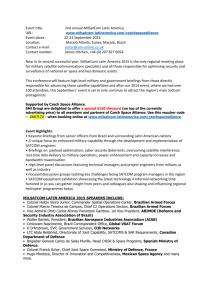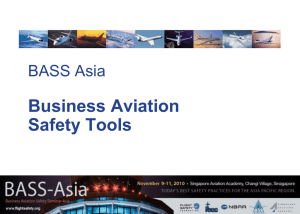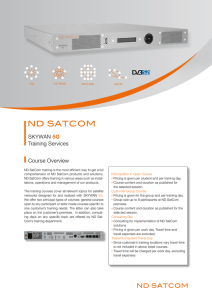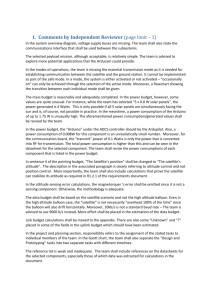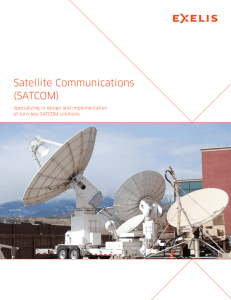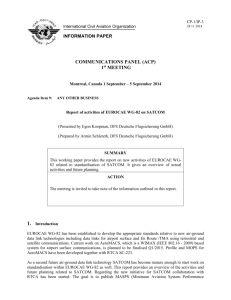IBAC Technical Report Summary
advertisement
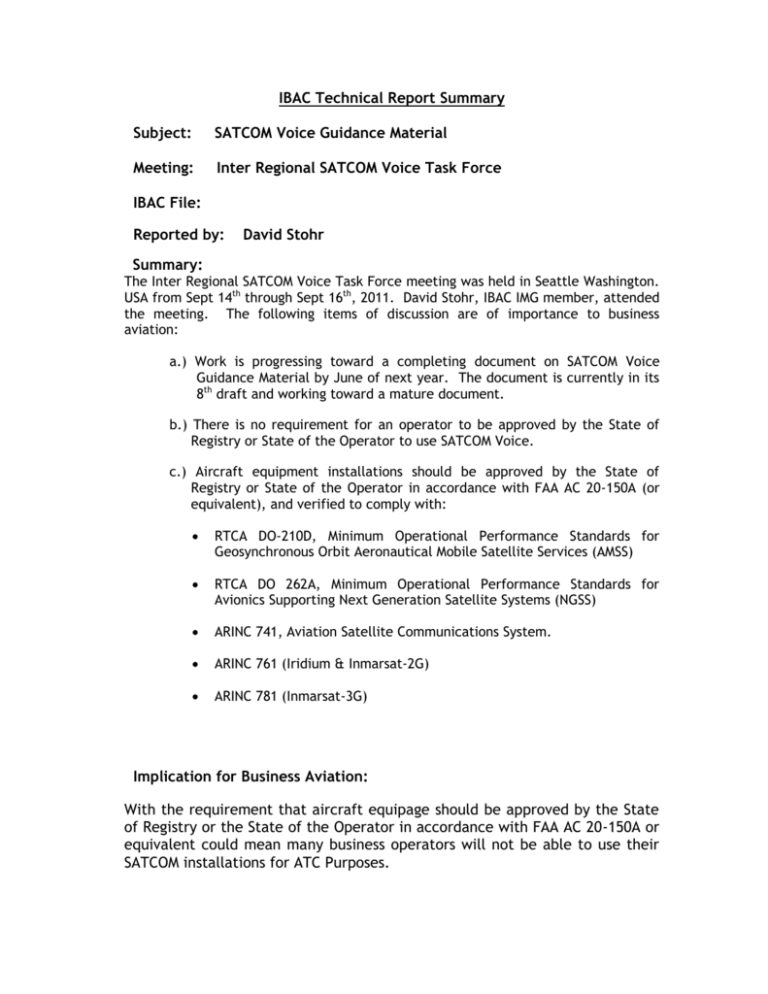
IBAC Technical Report Summary Subject: SATCOM Voice Guidance Material Meeting: Inter Regional SATCOM Voice Task Force IBAC File: Reported by: David Stohr Summary: The Inter Regional SATCOM Voice Task Force meeting was held in Seattle Washington. USA from Sept 14th through Sept 16th, 2011. David Stohr, IBAC IMG member, attended the meeting. The following items of discussion are of importance to business aviation: a.) Work is progressing toward a completing document on SATCOM Voice Guidance Material by June of next year. The document is currently in its 8th draft and working toward a mature document. b.) There is no requirement for an operator to be approved by the State of Registry or State of the Operator to use SATCOM Voice. c.) Aircraft equipment installations should be approved by the State of Registry or State of the Operator in accordance with FAA AC 20-150A (or equivalent), and verified to comply with: RTCA DO-210D, Minimum Operational Performance Standards for Geosynchronous Orbit Aeronautical Mobile Satellite Services (AMSS) RTCA DO 262A, Minimum Operational Performance Standards for Avionics Supporting Next Generation Satellite Systems (NGSS) ARINC 741, Aviation Satellite Communications System. ARINC 761 (Iridium & Inmarsat-2G) ARINC 781 (Inmarsat-3G) Implication for Business Aviation: With the requirement that aircraft equipage should be approved by the State of Registry or the State of the Operator in accordance with FAA AC 20-150A or equivalent could mean many business operators will not be able to use their SATCOM installations for ATC Purposes. Decisions Required: IBAC should use the Advisory Group to review FAA AC 20-150A and work with SATCOM vendors to insure that the SATCOM installations in business aircraft can be approved for Air Traffic Services. This report contains material for the sole information of IBAC Members and no guarantee or undertakings are given, or should be assumed, as to their accuracy. The content is under the copyright of the author and IBAC, and may not be distributed to third parties without specific agreement of the IBAC Director General. FAA AC 20-150A is now finalized and available from the FAA web site. The following are some of the requirements that are specified: Satellite voice is considered voice communication for the purpose of the operating rules pertaining to CVR. Means must be provided to record all flight crew satellite voice communications in crash survivable memory, if a cockpit voice recorder is required. Satellite voice calls Priority, Preemption, Precedence o If a satellite voice channel is in use and the ground station wants to send a higher priority call, the satellite voice equipment should clear the lower priority channel. If all available channels are in use, the equipment should preempt the channel supporting the lowest priority channel in favor of the higher-priority call. o The satellite voice equipment must provide the flight crew the means to preempt any call at any time. The equipment may provide the means for automatic preemption of cabin communications. o The satellite voice equipment may also allow flight crew members to place their call request at the top of the queue – that is, to camp-on while awaiting free resources. Flight crew procedures should include explicit instructions defining how the flight crew can use camp-on capability. o The satellite voice equipment should configure the cockpit default priority to level 2. The flight crew must have the ability to se the priority level for an individual call.
